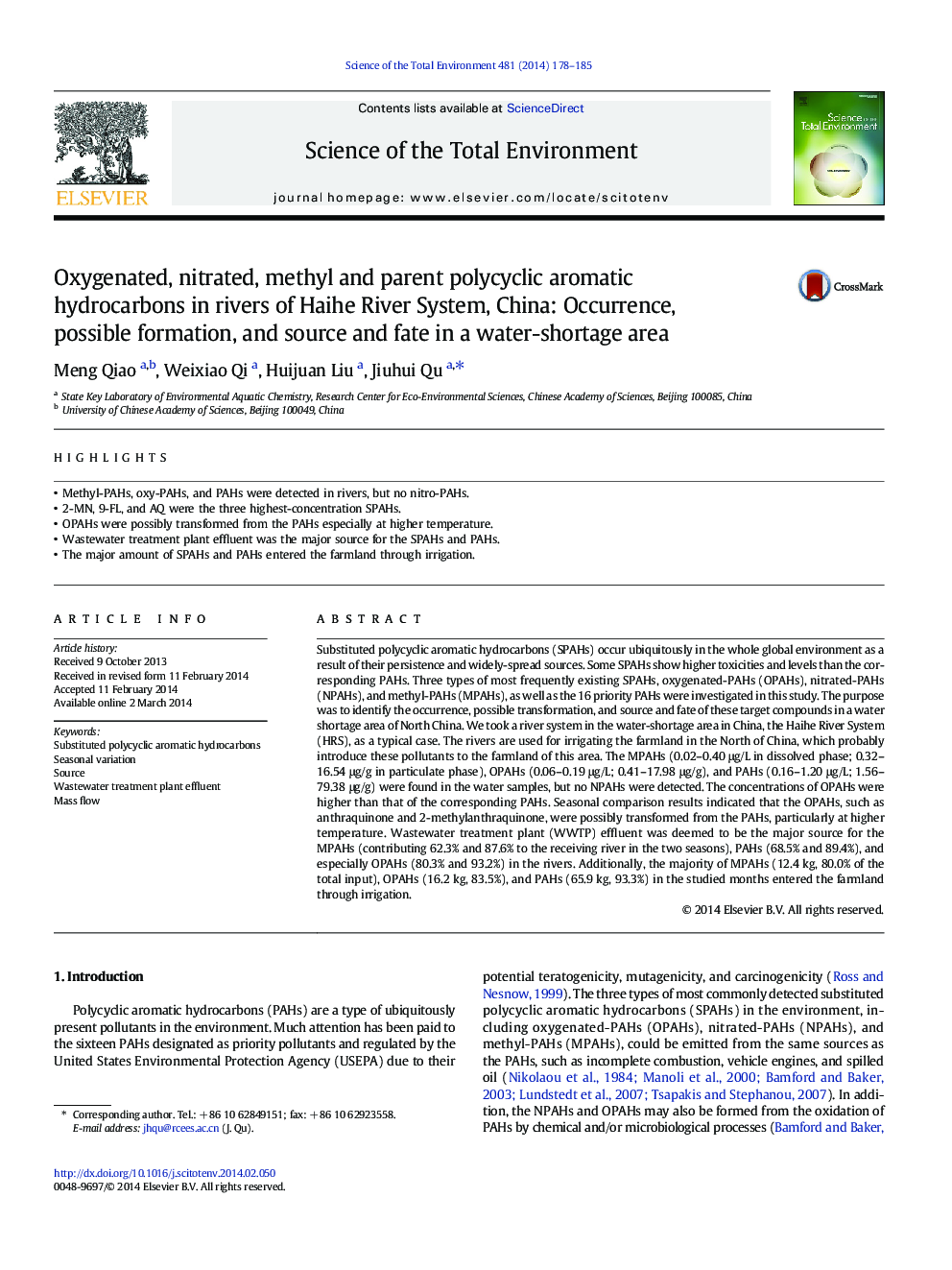| Article ID | Journal | Published Year | Pages | File Type |
|---|---|---|---|---|
| 6330844 | Science of The Total Environment | 2014 | 8 Pages |
â¢Methyl-PAHs, oxy-PAHs, and PAHs were detected in rivers, but no nitro-PAHs.â¢2-MN, 9-FL, and AQ were the three highest-concentration SPAHs.â¢OPAHs were possibly transformed from the PAHs especially at higher temperature.â¢Wastewater treatment plant effluent was the major source for the SPAHs and PAHs.â¢The major amount of SPAHs and PAHs entered the farmland through irrigation.
Substituted polycyclic aromatic hydrocarbons (SPAHs) occur ubiquitously in the whole global environment as a result of their persistence and widely-spread sources. Some SPAHs show higher toxicities and levels than the corresponding PAHs. Three types of most frequently existing SPAHs, oxygenated-PAHs (OPAHs), nitrated-PAHs (NPAHs), and methyl-PAHs (MPAHs), as well as the 16 priority PAHs were investigated in this study. The purpose was to identify the occurrence, possible transformation, and source and fate of these target compounds in a water shortage area of North China. We took a river system in the water-shortage area in China, the Haihe River System (HRS), as a typical case. The rivers are used for irrigating the farmland in the North of China, which probably introduce these pollutants to the farmland of this area. The MPAHs (0.02-0.40 μg/L in dissolved phase; 0.32-16.54 μg/g in particulate phase), OPAHs (0.06-0.19 μg/L; 0.41-17.98 μg/g), and PAHs (0.16-1.20 μg/L; 1.56-79.38 μg/g) were found in the water samples, but no NPAHs were detected. The concentrations of OPAHs were higher than that of the corresponding PAHs. Seasonal comparison results indicated that the OPAHs, such as anthraquinone and 2-methylanthraquinone, were possibly transformed from the PAHs, particularly at higher temperature. Wastewater treatment plant (WWTP) effluent was deemed to be the major source for the MPAHs (contributing 62.3% and 87.6% to the receiving river in the two seasons), PAHs (68.5% and 89.4%), and especially OPAHs (80.3% and 93.2%) in the rivers. Additionally, the majority of MPAHs (12.4 kg, 80.0% of the total input), OPAHs (16.2 kg, 83.5%), and PAHs (65.9 kg, 93.3%) in the studied months entered the farmland through irrigation.
